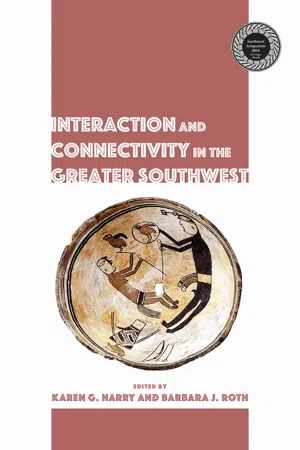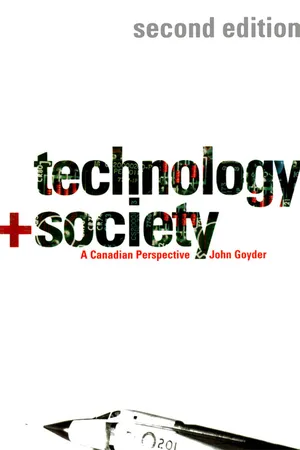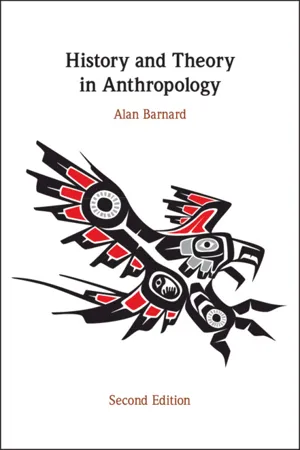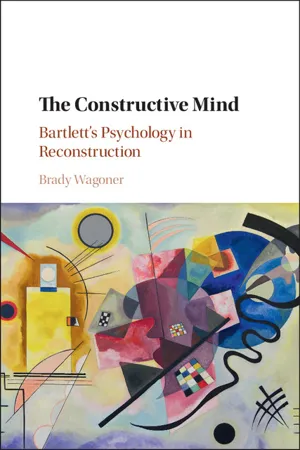History
Cultural Diffusion
Cultural diffusion refers to the spread of cultural beliefs, practices, and customs from one society to another. This process occurs through trade, migration, conquest, or other forms of contact between different cultures. As a result, cultural diffusion leads to the blending and exchange of ideas, technologies, and traditions, shaping the development of societies and civilizations over time.
Written by Perlego with AI-assistance
Related key terms
1 of 5
5 Key excerpts on "Cultural Diffusion"
- Karen Harry, Barbara J. Roth(Authors)
- 2019(Publication Date)
- University Press of Colorado(Publisher)
Part IDiffusion
Passage contains an image
2
Beyond Trade and Exchange
A New Look at Diffusion
Catherine M. Cameron DOI: 10.5876/9781607327356.c002Diffusion is a word familiar to most archaeologists today, although they seldom use it. It comes from the Latin diffundere, which means “to spread out.” In particle physics, chemistry, biology, and a number of social sciences, it is a transport phenomenon that results in mixing and mass transport. In anthropology, diffusion has had the same spatial implications. Kroeber defined it as “the process, usually but not necessarily gradual, by which elements or systems of culture are spread; by which an invention or a new institution adopted in one place is adopted in neighboring areas” (Kroeber 1931:139; cited in Lyman 2008:12). Diffusion sounds like a simple and useful concept but in anthropology it has a long and checkered history, including its use in various racist and nationalist theories (Trigger 2006:217–232; Storey and Jones 2011). While we certainly must distance ourselves from the racist and nationalist notions of the nineteenth and early twentieth centuries, diffusion is a conception that archaeology cannot do without. Ideas, styles, technologies, languages—virtually any aspect of culture does move from one group of people to another. This chapter represents an effort to reclaim the concept of diffusion and reintroduce it to mainstream archaeology (see also Kristiansen and Larsson 2005; Storey and Jones 2011).Prehistoric archaeology currently lacks a well-developed body of theory for understanding the mechanisms by which diffusion occurs, especially those factors that condition the acceptance or rejection of specific cultural practices when social groups interact (but see Kristiansen and Larsson 2005). This is not a trivial gap in our grasp of prehistoric culture change. No society is an isolate; every social group operates in a context that includes multiple interacting societies. By overlooking the mechanisms through which diffusion occurs, we are unintentionally imagining it as an uncomplicated process, like ink moving across blotter paper. Consideration of the mechanisms of diffusion, and the parameters that affect the adoption or rejection of cultural practices, as illustrated in the following chapters with examples from the Southwest, has the potential to significantly advance our understanding of culture change.- eBook - PDF
Technology and Society
A Canadian Perspective, Second Edition
- John Goyder(Author)
- 2019(Publication Date)
- University of Toronto Press(Publisher)
CHAPTER III Technological Diffusion S OCIAL SCIENTISTS have studied Cultural Diffusion, the process of spread and imitation, for over a century. 1 It has already been noted that technology is part of societal culture, and so it follows that technological diffusion is a particular form of the more gen-eral diffusion of all aspects of culture. Diffusion would seem to hold spe-cial importance for Canadian students of technology and society since, as noted in preceding pages, we have relied heavily as a nation on imported technologies. The present chapter begins by suggesting some aspects of all Cultural Diffusion, and then examines technological diffusion more specifically. THE PROCESS OF DIFFUSION Cultural Diffusion is stimulated by the migration of populations, one of the key aspects of human demography. Given strong evidence from DNA analysis (see Chapter i) that all human beings descend from African ancestors, and since examples of Homo erectus dating from at least one mil-lion years ago have been discovered as far away from Africa as Indonesia and China, the tendency to migrate is not only an ancient trait of humans but of pre-humans as well. Homo erectus was, after all, an early hominid type replaced by Homo sapiens some 300,000 years ago. 2 These population movements from such ancient prehistoric times may not have been consciously motivated migrations at all, so much as unconscious drift, as Leakey terms it. He estimates that the rate of trav-el might have been only some 20 kilometres a generation. 3 It was in the Neolithic era, the time of the agricultural beginnings noted in Chapter i, that more complete data on rates of technological diffusion become avail-able. These Mediterranean civilizations were naturally migratory for the good reason that the agriculture by its very wastefulness encouraged the gradual penetration of new areas, a suggestion advanced by Derry and 75 - eBook - ePub
The World's Construction Mechanism
Trajectories, Imbalances, and the Future of Societies
- Jacques Barnouin(Author)
- 2020(Publication Date)
- Wiley-ISTE(Publisher)
4 Diffusion of Societal Achievements4.1. The notion of diffusion
In the previous phase, three social construction sites were highlighted in the Middle East and Africa: the Levant; Mesopotamia; the Nile Delta and its valley. No other area seems to have benefited in the first analysis from such early organization, so it seems necessary in the next stage to try to observe: how the Near Eastern advances could have been disseminated from their primitive homes and how the Near Eastern homes exchanged their advances with those of other areas of the world – benefiting from the latter’s contributions and making them benefit from their own advances.Diffusion (from the Latin diffundere, meaning “to carry at a distance”, “spread” or “retransmit”) is a physical (Figure 4.1 ) and media phenomenon concerning, as such, both molecules and ideas. As for the dissemination of ways of being and doing – which has produced high-quality scientific reflections, particularly with reference to the Middle East – this topic has been the subject of violent anthropological controversies, some of which have even called into question the very concept of diffusion [GAZ 08; PER 15].The diffusion of knowledge and ideas can only be promoted by – or stem from – the human propensity to imitate, whose “laws” were studied in the 19th Century under the anthropological prism [DJE 05]. Propensity: that our journey has already given us the opportunity to approach several times; that can be seen from different angles (adaptation, learning, mockery, transmission) and that is concretized in particular by the effects of mode and multitude, and through the notion of a model [DIA 05]. Our “daily imitation capacity” therefore seems to be able to constitute, like surveillance, a powerful vector for the dissemination of know-how. But in any case, is the capacity for imitation essentially cultural, or rather genetic? - eBook - PDF
- Alan Barnard(Author)
- 2021(Publication Date)
- Cambridge University Press(Publisher)
4 Diffusionist and Culture-Area Theories Diffusionism stresses the transmission of things (material or otherwise) from one culture to another, one people to another, or one place to another. An implicit presupposition of extreme diffusionism is that humankind is uninventive: things are invented only once, and then are transmitted from people to people, sometimes across the globe. This can be effected either by direct transmission between stable populations or through migrations by culture-rich peoples. In contrast, classical evolutionism assumes that humankind is inventive: each population has the propensity to invent the same things as the next, though they will do so at different rates. By the time diffusionism was dwindling in importance, around the 1930s, it had left behind ideas which were picked up within other traditions: the idea of ‘culture areas’ is the most prominent example. This had already become an important facet of the ethnographic tradition of Franz Boas and his followers (see Chapter 8). It also appeared within the evolutionism of Julian Steward and within the functionalist and structuralist traditions which emerged in the first half of the twentieth century (Chapters 5 and 9). Culture-area and regional approaches are a logical outgrowth of an emphasis on diffusion, and this chapter will cover these approaches with this point in the background. 4.1 Antecedents of Diffusionism: Philology, Müller, and Bastian Diffusionism originated in the eighteenth-century philological tradition which posited historical connections between all the languages of the Indo-European language family. The Philological Tradition: Diffusionism before the Diffusionists? The breakthrough came in 1787, when Sir William Jones, an English orientalist and barrister serving as a judge in India, discovered similarities between Sanskrit, Greek, and Latin. In the early nineteenth century, 48 - eBook - PDF
The Constructive Mind
Bartlett's Psychology in Reconstruction
- Brady Wagoner(Author)
- 2017(Publication Date)
- Cambridge University Press(Publisher)
Elaboration refers to the increasing complexity of culture, and thus the constructive side of diffusion. This can occur through the repetition of certain patterns, and by conscious or unconscious invention. Ornamental designs are good illustrations of this principle at work, often incorporating patterns of a foreign group into those of the home group. The opposing but complimentary process of simplification refers to the disappearance of details through their absorption into a more dominant detail, as has generally happened with the evolution of alpha- bets. 14 The best condition for elaboration is where a special group has a position of moderate dominance within the community and a close working relationship with it. Simplification tends to occur through either isolation or popularization. The former typically happens with ceremo- nial culture and the latter with material culture. In decorative arts, for example, expansion of the group with new members creates conditions for unskilled and careless copying of designs. Isolation may occur when the group secures a position of dominance in the community and makes little effort to widen its influence within the community. In Remembering, Bartlett returns again to the issue of the general prin- ciples of cultural transformation in diffusion and provides an altered list of the processes involved, namely assimilation, simplification, retention of apparently unimportant elements, and social constructiveness. The first three in the list are primarily conservative processes. Assimilation refers to the part played by the existing cultural background of the group concerned. Any new cultural element must be linked to the cultural patterns of the receipt group if it is to be adopted. In this process, the new element is transformed to fit the group’s cultural patterns while the patterns them- selves flexibly adapt to the new content.
Index pages curate the most relevant extracts from our library of academic textbooks. They’ve been created using an in-house natural language model (NLM), each adding context and meaning to key research topics.




